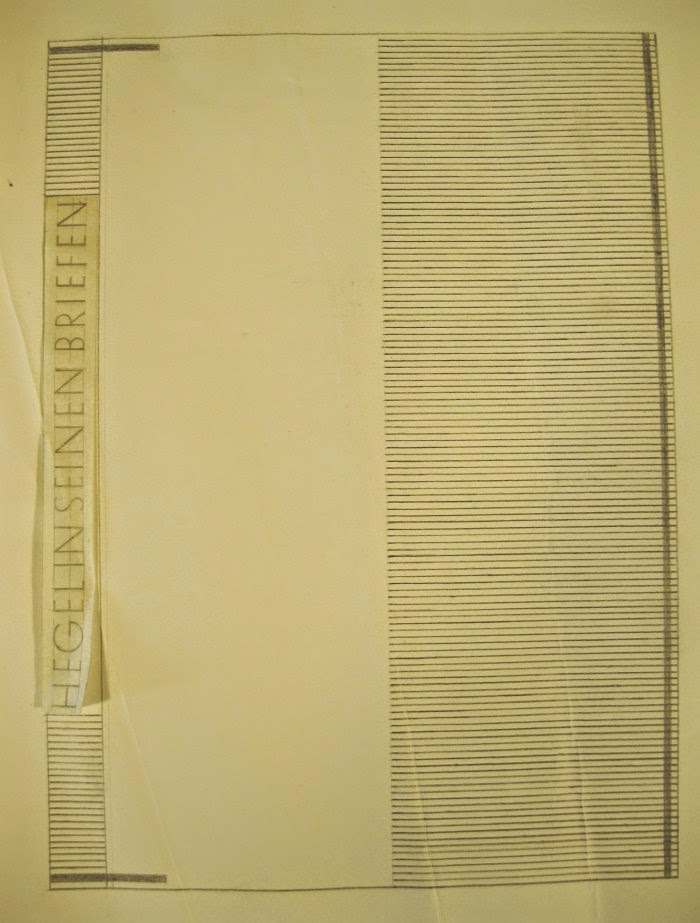Received one of my interlibrary loan requests today, an article by Ernst Collin about bindings being exhibited by Meister der Einbandkunst at the Bugra exhibition in Leipzig. The Bugra was THE most significant publishing and binding trade fair in Germany at that time.
In the article titled
Die alte, neue Bugramesse: Was die Meister der Einbandkunst zeigten,Collin described the refocusing of the Bugra back to its roots and away from a more general trades oriented exhibition.He also provided context for the Bugra, and among other things commented on the contrast between the high art of French binding and the dominance of simple paperback bindings on poor paper for the majority of trade books.
Then there was this, still, new group,
Meister der Einbandkunst, with a modest exhibition of bindings by established binders and lesser known members. Given the limited space available to him, Collin focused on several binders chosen in no particular order of significance in order to highlight their work. Among them Gerhard Gerlach who emigrated to the US with his American wife Katheryn.
From the retrospective part of the Guild of Book Workers 100th Anniversary Exhibition:
Gerhard Gerlach was born in 1907 in Germany, apprenticed to a binder
for three years and studied with Ignatz Wiemeler at the State Academy
of Graphic Arts in Leipzig, attaining his certificate and diploma
as a master binder before emigrating to the United States. He was brought
to the USA by a young American he met at the Academy, Katheryn Edwards.
Together they formed a remarkable bookbinding team, crafting not only
fine bindings but fine binders. Upon arriving in the USA
in 1934, he taught at Columbia University. At his Bookbinding Workshop,
opened in 1945, he partnered for a short while with Hope G. Weil and
later Charlotte Ullman. Among his students were Eva Clarke, Margaret
Lecky, Inez Pennybacker, Hope Weil, Arno Werner, and Laura Young. Gerhard
Gerlach joined the Guild in 1939 remaining a member until his death
in 1968. To honor his contributions, the Guild mounted a memorial exhibition
of his bindings at the Grolier Club in 1971.
Here an edited composite of the Collin article with the section on Gerlach.
 |
Die alte, neue Bugramesse: Was die Meister der Einbandkunst zeigten,
Allgemeiner Anzeiger für Buchbindereien, Vol 45, Nr 12, 1930 (244-245) |
Given the significance of the Bugra and Gerlach's connection to Wiemeler I searched online to see if any bindings were depicted. Like winning the lotto, all the Gerlach bindings happened to be for sale very recently and were depicted at
Peter L. Masi – books (along with many other bindings). With permission I reproduce them here with Collin's translated comments.
 |
| Design study for Hegel, Delius, Seinen Briefen |
 |
| Hegel, Delius, Seinen Briefen, 1918, #54, bound by Gerhard Gerlach
|
Of Hegel,
Delius, Seinen Briefen, 1918, #54, Collin wrote
"that the binding is divided into two sets of parallel panels in which
the outside ones have tightly spaced parallel lines tooled in blind. This allows the grain of the leather to stand out more in the untooled panels, but unfortunately the denseness of the tooled lines obscure the natural grain of the leather."
Collin also singles out the remaining bindings below for the way in which the leather, the design of the bindings, and the tooling whether blind or gold. stand out positively.
 |
Hofmannsthal, Deutsche Epigramme, Munchen, 1923, #83, bound by Gerhard Gerlach
|
 |
| Carl Burckhardt, Kleinasiatische Reise, Munchen, 1925, bound by Gerhard Gerlach |
 |
| von Aue, Borchardt, Der arme Heinrich, Munchen, 1925 |
He concludes by saying that this young binder has shown himself to be a "hope awakening personality" for the future.
The work of Wiemeler and Dorfner was part of the "
new objectivity" (neue Sachlichkeit) that was "Americanism, cult of the objective, the hard fact, the predilection
for functional work, professional conscientiousness, and usefulness." To the Nazis it was degenerate, but even then the style was adapted well to serve their "need" for presentation bindings and other accessories, but that is a story for another time.
The Gerhard & Kathryn Gerlach collection was recently sold by Peter L. Masi Books and those wishing to study the bindings, artwork, correspondence... will want to travel to Indiana University's
Lilly Library in Bloomington - a most fitting home. Give them time to process and catalog first though - it was just acquired.
[Edit 7/1/2018]
Two additional articles about the Gerlachs can be found in the
Journal of the Guild of Book Workers.
GERHARD GERLACH by Laura S. Young
Volume 7, Number 1, Fall 1968 (PDF pg 4)
https://guildofbookworkers.org/sites/guildofbookworkers.org/files/journal/gbwjournal_007_no1.pdf
GERHARD GERLACH AS A HAND BOOKBINDER by Kathryn
Gerlach
"This Memorial Exhibition is testimony to the fact that
Gerhard Gerlach was not only a great bookbinder, but a great
artist as well."
Volume 10, Number 1 Section B, 1972 (PDF pg 25)
https://guildofbookworkers.org/sites/guildofbookworkers.org/files/journal/gbwjournal_010_no1b.pdf


















